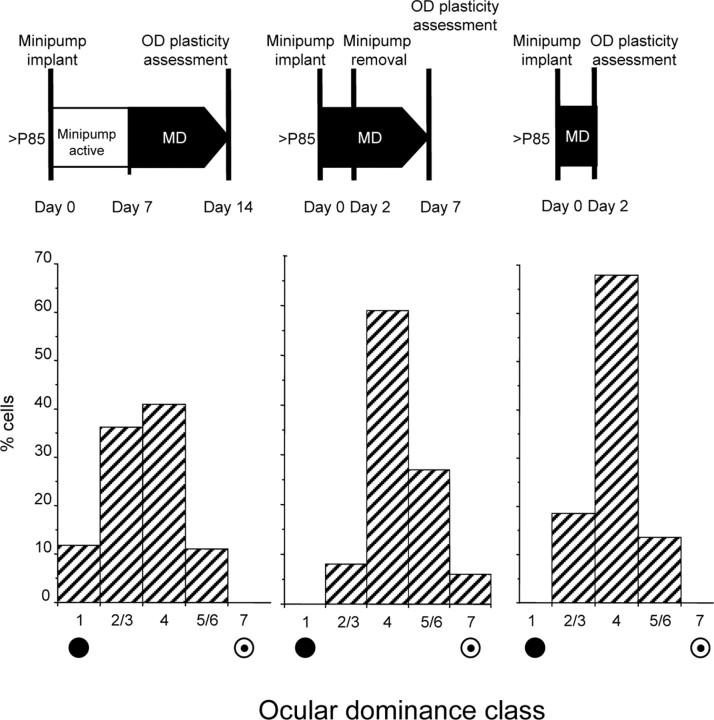Figure 3.
Reduction of intracortical inhibition is necessary for the inducibility of the OD shift in response to MD but is not necessary for its maintenance. Top line, Sketch of the experimental protocols. Bottom line, OD distributions obtained with the experimental protocol shown above. Left, The OD shift is induced only if MD is performed during the period of reduced intracortical inhibition. The OD distribution in animals (N = 4, 128 cells) subjected to 7 d of MD starting from day 8 after minipump implant (PTX; pumping ends at day 7) is not significantly different from that in control undeprived rats (χ2 vs OD distribution in normals, p = 0.34). Center, The OD shift persists after the end of the treatment. OD distribution in animals (N = 4, 114 cells) with a PTX minipump implanted the same day of MD onset and disconnected 2 d later; these animals were recorded 5 d after minipump removal (total MD days = 7). The OD distribution is still significantly shifted toward the nondeprived eye (χ2 test vs normal OD distribution, p < 0.001) and is not different from the OD distribution observed in animals deprived for 7 d and recorded while inhibition was still reduced (χ2 test vs PTX MD, p = 0.8). Right, Two days of MD are sufficient to induce a detectable OD shift. OD distribution in animals (N = 3, 81 cells) recorded after 2 d of MD and reduced inhibition (PTX minipump). The OD distribution is significantly shifted toward the nondeprived eye with respect to that in normal animals (χ2 vs normal OD distribution, p = 0.003).

